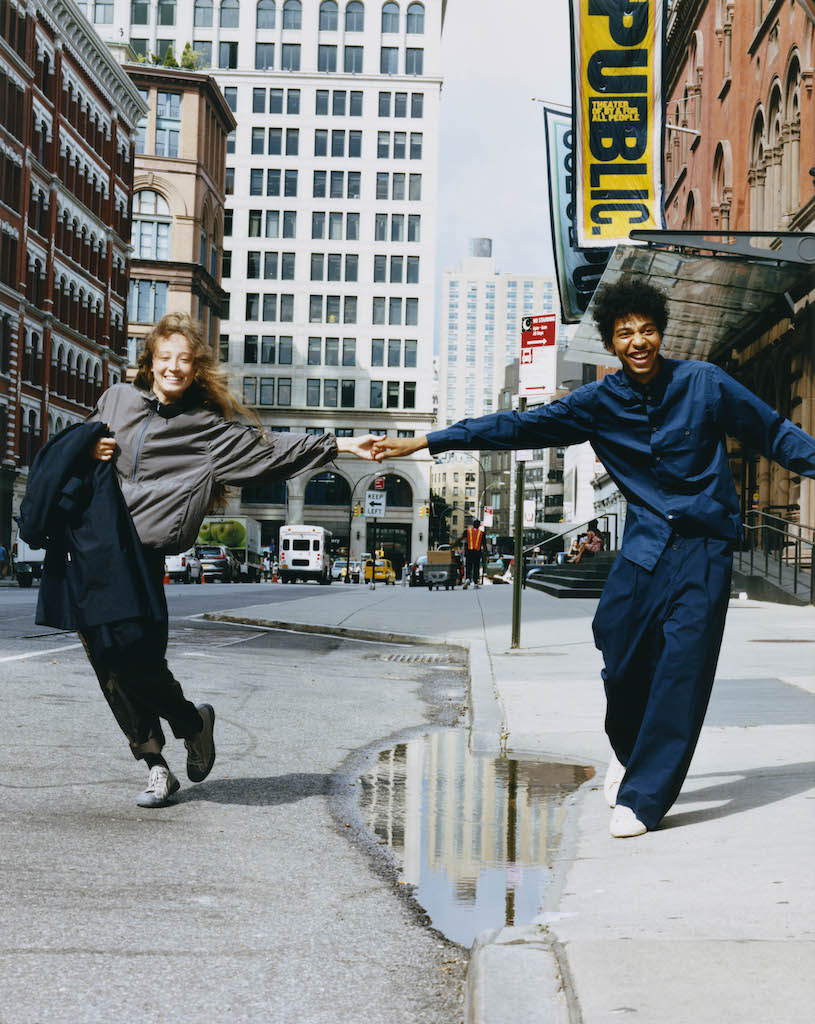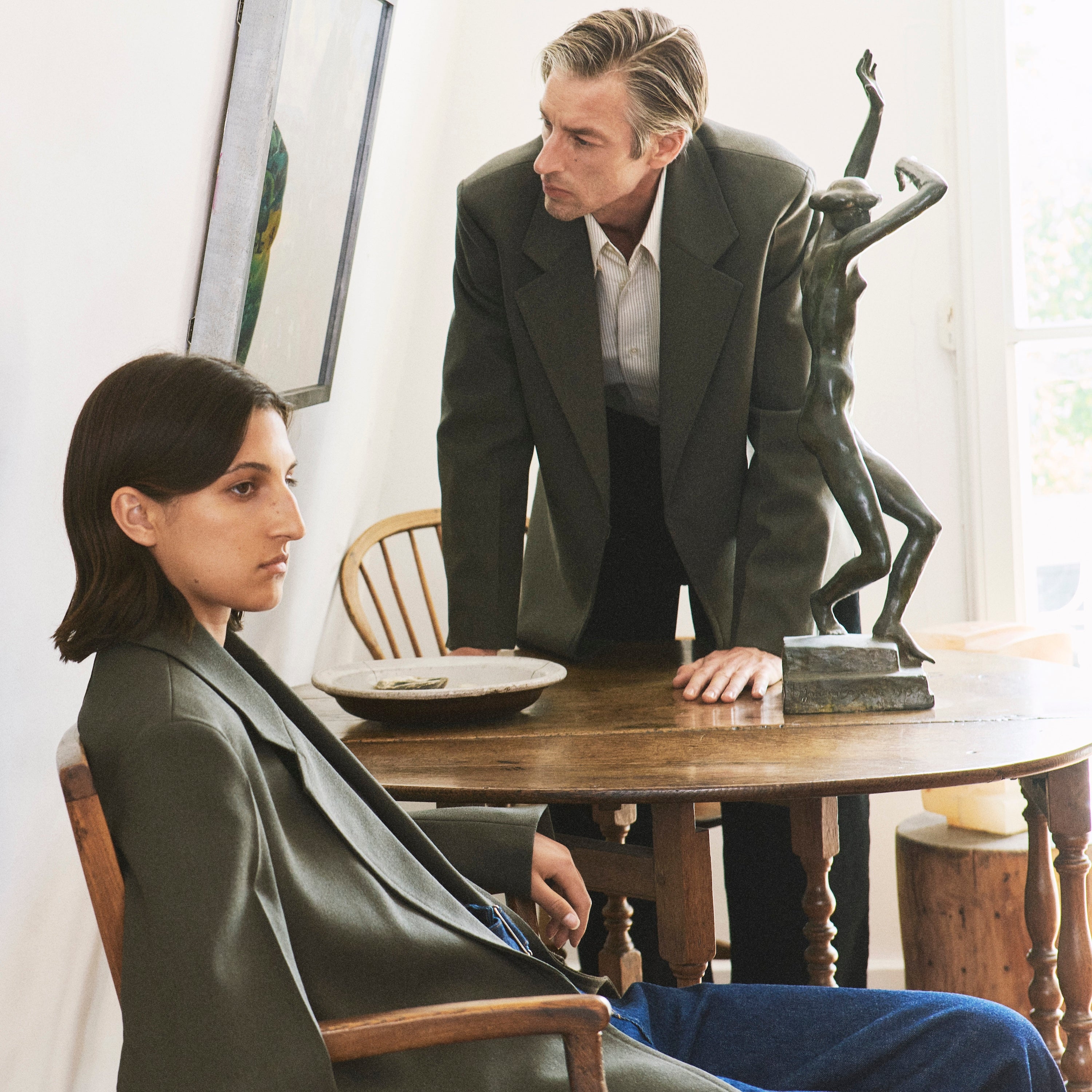





Speaking about how the idea for SNJP materialised, Wakeman explained how her background studying textiles informs her daily working practice, "For me, there's no question – it's always fabric first. I'm not driven by the traditional fashion industry, merchandising-lead model, where range planning dictates what I design. Tactility and structure inform the end result; I create shapes according to how a cloth behaves, because after all, everything we wear is an engineered product – the raw materials must fit the end purpose."
Japan has always pushed the parameters of textile possibilities. It's this forward-thinking attitude that speaks volumes to Wakeman, who throughout her career, has never been afraid to introduce layers of so-called misunderstood fabrics to the Studio Nicholson collections. Explaining the reasons for championing lesser understood fabrics, she pointed out, "We're educated to believe that European fabrics embody an age-old notion of luxury. This is widely accepted to include to all the heavy-hitting, mainstream heritage fibres such as wool, cashmere and silk. What I love most about Japanese fabric mills is that am constantly surprised by their innovation. They have a fearless conviction about experimentation – they're not afraid to use polyester in a luxury cloth. They seem to understand, instinctively, how to use traditional methods and cutting-edge technology together to make fabrics that look so authentically 'Japanese'."
Known for its high humidity levels, it comes as no surprise to learn that in Japan, use of moisture absorbing plant fibres in fabric weaving, like Bamboo or Washi give a tell-tale 'dry' fabric handle. SNJP is a reaction to how we'll be dressing more sustainably in the future. In a culture overwhelmed by conspicuous consumption, perhaps it's time to reduce, refine and rethink the way we dress. There is power in the edit, beauty in durability and dignity to be found once we pair everything back to the essentials.
Wakeman concludes, "For me, the Japanese have always been the pioneers. Quietly, but intelligently devising fabric with nuances that are impossible to imitate. This, along with a colour palette that is deliberately ambiguous, brings an additional sensory layer to Studio Nicholson. Salt induced shrinkages, typewriter cottons, dense Corduras and washi paper fabrics bring fresh crumple and crunch for a more casual approach to the modular wardrobe."

